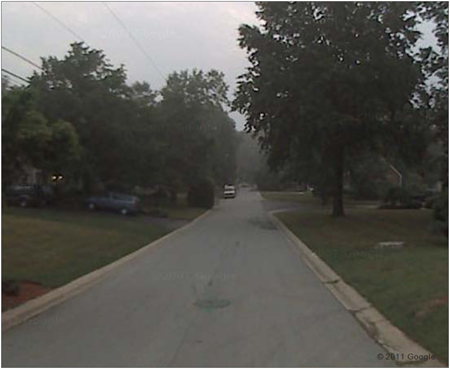I finished Christopher Witmore’s Old Lands: a chorography of the Eastern Peloponnese (2020) this weekend and thoroughly enjoyed it. As I said last week, it was a great way to kick off my summer reading and a useful tonic for a summer without fieldwork.
This is the kind of book that will likely resist any kind of useful, formal review. It’s easy enough to note places where Witmore overlooked scholarship relevant to his larger arguments (e.g. Kostis Kourelis’s important 2007 Hesperia article, “Byzantium and the Avant-Garde” would have fit nicely into Witmore’s treatment of Corinth, for example, or Evi Karouzou’s 2014 monograph, Les jardins de la Méditerranée: agriculture et société dans la Grèce du sud, 1860-1910, would have complemented and expanded his considerations of the agricultural history of the Corinthia and Argolid, or, finally, David Pettegrew’s observations on Kromna on the Isthmus of Corinth would have complicated Witmore’s analysis of that site). Likewise, it will also be convenient for a reviewer to observe that the routes Witmore took through the Northeast Peloponnesus overlooked certain areas like the Southeastern Corinthia, the Western Argolid, or the Inachos Valley. As a result, he overlooked the delicious abundance of souvlaki stands at the intersection of the old national road and old Peloponnesian narrow-gauge railway in the village of Myloi. There are, of course, little factual slips from time to time: the Athos canning plant near Nauplio (referred to in Route 18) is probably the former Kyknos canning plant.
None of this really matters, however, because the book is not meant to be an exhaustive history of the landscape of the Argolid and Corinthia. Instead, the book represents an unapologetically personal look at the region. This approach reflects Witmore’s commitment to the tradition of chorography which he offers as both a kind of critical commentary on the ancient writings of Strabo and Pausanias, the Ottoman period in the writings of Evlyia Celebi, the early modern works of Jacob Spon and George Wheler and the Expédition scientifique de Morée, and the modern period with the travels of Martin Leake, Edward Dodwell, and Gertrude Bell. Contemporary scholars, John Cherry, Alex Knodell, join Witmore from time to time as do various other Greeks, American students, and family members. At the center of the book, however, is Witmore and his interests, relationships, and restless feet guide carry the reader through the Greek countryside.
Chorography, if I understand it, challenges views of the landscape dominated by cartography, geography, and modern landscape archaeology which serves to create the homogeneous spaces of the modern map. If the lines and points of the modern scholar serves to measure and rectify space into some form of universally recognized pattern, the routes of the chorographer are embedded in the landscape itself and follow the contours of the land, the rhythm of the fields, and the often abrupt discontinuities between the present and a visible past. While archaeologists have often seen Witmore’s work elsewhere as overly (and maybe even oppressively?) theoretical, Old Lands serves as a critical and important corrective. Witmore’s goals are not to use the eastern Peloponnesus as at the basis for some kind of theoretical exegesis, but to offer this landscape as a kind of anti-theory (echoing, in some ways, the work of Peter Sloterdijk who appears frequently in his footnotes). For example, the landscape is not a text to be decoded or deconstructed. It is not a place to be unpacked, analyzed, compared, or abstracted. Instead, it’s a space to be experienced and encountered.
At times (and as an avowedly selfish reader), I wondered how Witmore’s chorography relates to our modern and perhaps contemporary experience of tourism. His effort to defamiliarize a landscape well-known to archaeologists and scholars evokes the modern promise of the tourists gaze which seeks to bridge the gap between the everyday and the exotic. Witmore makes romantic a walk through an olive grove which represents one of the most banal and unremarkable experiences of time in the northeast Peloponnesus. Fishfarms, irrigation systems, terrace walls, dirt and paved roads, goat tracks, maquis, and even the annoying hillsides of Jerusalem sage take on a wondrous quality in Witmore’s work. But is this because these experiences are wondrous or because, in Witmore’s able hands, he is creating a wondrous experience for the reader in much the same way an able tour guide brings a landscape or encounter alive and something as banal as “Mexican Coke” becomes an invitation to an unfamiliar world. (This relates, of course, to my own work along similar lines here.)
Witmore’s work also nudged me to think a bit more about my idea of a “slow archaeology.” While most of my work has focused on “slow” as a challenge to our technologically mediated encounters with archaeological work, Witmore’s chorography with its attention to the details of experience and encounter feels like it occupies a similar space. The absence of any technology in Witmore’s work (other than the maps which he includes at the end) and the emphasis on the individual rather than the team of archaeologists, the procedures of data collection, and the methods of analysis, creates a view of archaeological practice that differs from the almost-automated routines of the intensive pedestrian surveys or of systematic excavation that so defined the archaeological landscapes of the northeastern Peloponnesus.
In this way, Old Lands offers a critique of contemporary archaeological practices, but doesn’t reject them. It also offers a new way to think about the field of Mediterranean archaeology. In recent years, Mediterranean archaeologists have pushed more archaeological practices that align more closely with our peers in “world archaeology.” This frequently involves more specialized training in scientific methods, the use of digital tools, and systematic approaches grounded in the literature of anthropological archaeology. Witmore doesn’t contest this, but by grounding his approach in chorography, he proposes an alternative that is no less grounded in the latest technologically mediated approach to the past, but is also explicitly aware of the experience of being in the landscape.
















